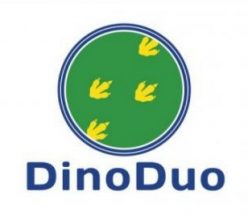ABC’s of Physical literacy
 Physical literacy is the motivation, confidence, physical competence, knowledge, and understanding to value and take responsibility for engagement in physical activities for life.” – The International Physical Literacy Association, May 2014.
Physical literacy is the motivation, confidence, physical competence, knowledge, and understanding to value and take responsibility for engagement in physical activities for life.” – The International Physical Literacy Association, May 2014.
Physical Literacy develops as a child grows and begins to combine and sequence their repertoire of movement skills, developing more specialised movement skills . Research shows that a child’s skill level increases with increased opportunities to practice these skills. The more your child gets offered opportunities to perform these movement skills the better they will get at these skills. This in turn leads to increased confidence, competence and enjoyment of movement based activities . Your preschool child becomes more likely to participate and become physically literate.
Dinoduo calls this developing your child’s ABC’s of physical literacy using fun and interesting games and activities. Dinoduo works to develop a childs
- Agility– the ability of your child to move smoothly and freely, varying their speed and direction as needed
- Balance– the ability of the child to keep themselves upright as they move their bodies into challenging positions. As the child’s motor skills progress, there are more challenges on their balance
- Co-ordination– motor skills require your child to coordinate their upper and their lower limbs. They also need to coordinate one side of the body in relation to the other. Hand-eye coordination is very important in helping your child catch and throw a ball on target
- Skills– most sports require specific motor skills. Functional motor skills such as running, jumping, throwing and kicking can all be developed and provide the building blocks for future sports and athletic skills
| The 4 E’s
Environment Example Encouragement Enjoyment The 4 “Es” |
Hankle and Roary want you to remember “The 4 E’s” when providing your child with movement activities to help develop Physical Literacy.
Environment: As a parent, you can provide lots of opportunities for movement activities, both indoors and outside. You can create gyms and obstacle courses by using simple household items and moving the furniture. You can turn the music up loud and have a “dance off”. You can stimulate your child’s imagination and go on a ride to the moon or sail on a pirate ship with a cardboard box. You can bring your child on a visit to the park, walk in the woods or visit the indoor play area.
Example: if your child sees you running, dancing, cycling and kicking a ball they will follow your lead, so come on, have fun and join the movement party
Encouragement: Provide lots and lots of it. Let your child know that you enjoy seeing them move. They don’t have to win the race or climb to the highest slide in the park. Each child develops mastery of their own body at their own time. Take delight as they get better at doing something and let them know it.
Enjoyment: movement should be enjoyable, help your child to participate and have him/her occasionally push themselves a little bit further to help them master a task. However, it should always be enjoyable, the challenge should be just within the child’s ability (maybe with a little help.)

Copyright Dinoduo 2018
